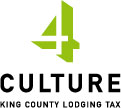Donate
Burien Actors Theatre is a 501c3 not for profit organization. Please donate to keep better live theater a reality -- even $5 helps! BAT Located at 14501 4th Ave SW, Seattle, WA 98166
-
Recent Posts
- Bauer – October 10, 11, 17, and 18 September 30, 2020
- Bold Grace – September 19, 20, 26, and 27 September 9, 2020
- BAT’s script club is back! September 2, 2020
- Open letter from BAT June 5, 2020
- Ripcord, next at BAT’s Shelter-in-place Season May 7, 2020
Recent Comments
- Kathleen McGuinness on Peggy Hunt passes
- Lance Bowman on Native Gardens poster art – choices
- Alex on Native Gardens poster art – choices
- Lance on Native Gardens poster art – choices
- BAT scholarship - deadline June 15, 2019 - Burien Actors Theatre - News BlogBurien Actors Theatre – News Blog on BAT Scholarship – 1 of 3
Season Sponsors
Our Friends
Meta
Monthly Archives: December 2014
BAT’s Holiday Concert on TV
On December 17, 2014, BAT held a Holiday Concert fundraiser with the Northwest Symphony Orchestra Brass Quintet. If you missed it there is still time to (1) see the concert and (2) make a donation to BAT. The concert will … Continue reading
Tipping the Tip Toppers
Talking to the Tip Toppers after they finished their run at the “Tip Top Lounge” as part of “Bob’s Holiday Office Party” on Sunday. (It was the first time BAT had live pre-show, intermission and post-show music. Thanks to Tip … Continue reading
Posted in Shows, Uncategorized
Tagged Bob's Holiday Office Party
Comments Off on Tipping the Tip Toppers
Elephant in the room
There is a reason why BAT is holding three fundraisers in December, while it also has “Bob’s Holiday Office Party” on the main stage. Like every small theater, it is impossible for BAT to cover its expenses through ticket sales. … Continue reading
Buy local
BAT buys local when possible. Here is a good example, the Bourbon in Bob’s Bourbon Rider, one of the specialty cocktails BAT created for “Bob’s Holiday Office Party” was distiller nearby, in Woodenville. Not right next door, but not that … Continue reading
“Bob’s Holiday Office Party” info
“Bob’s Holiday Office Party” is a fun filled Holiday comedy aimed to help you de-stress. But don’t take BAT’s word for it: Highline Times review HERE TICKETS
Posted in Uncategorized
Comments Off on “Bob’s Holiday Office Party” info
Composing and Performing the Music Score for “Bob’s Holiday Office Party”
By Allan Loucks People often mistake what I’m doing for “sound-design” or “doing-sound” However, I am composing and performing a music score, which has much more in common with the script than anything else. My music scores are always one … Continue reading
Posted in Shows, Technical
Tagged Bob's Holiday Office Party
Comments Off on Composing and Performing the Music Score for “Bob’s Holiday Office Party”
Holiday Concert with the Northwest Symphony Orchestra Brass Quintet
On December 17, BAT presents a Holiday Concert with the Northwest Symphony Orchestra Brass Quintet featuring Natalie Dungey, soloist (check out solo starting at at 2:34). This will be traditional Holiday music played by a brass quintet in chamber music … Continue reading
Posted in Fundraiser
Comments Off on Holiday Concert with the Northwest Symphony Orchestra Brass Quintet
Fire Watch 2014
On December 10, 2013, BAT suffered through a fire. (Fire bad!) On December 10, 2014, BAT is going to take time out of its Holiday craziness to thank those who put out the fire and helped BAT stay afloat. Join … Continue reading
Posted in Uncategorized
Comments Off on Fire Watch 2014


